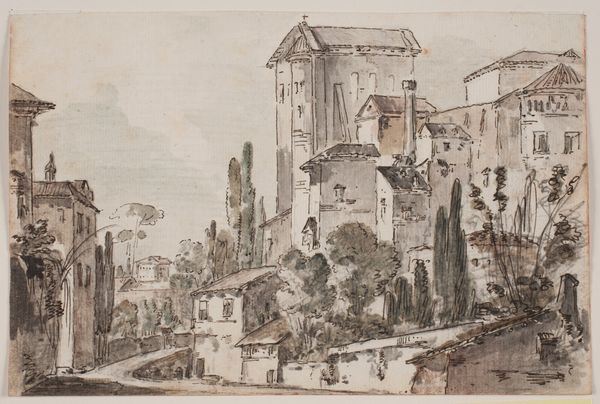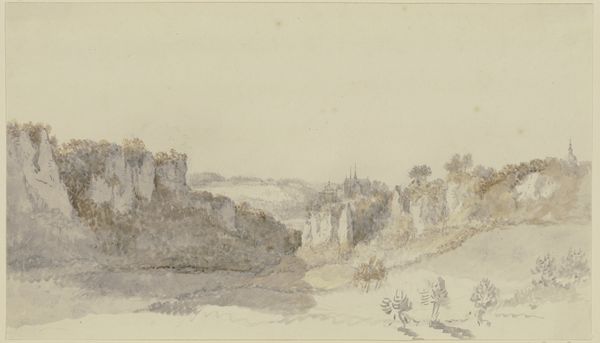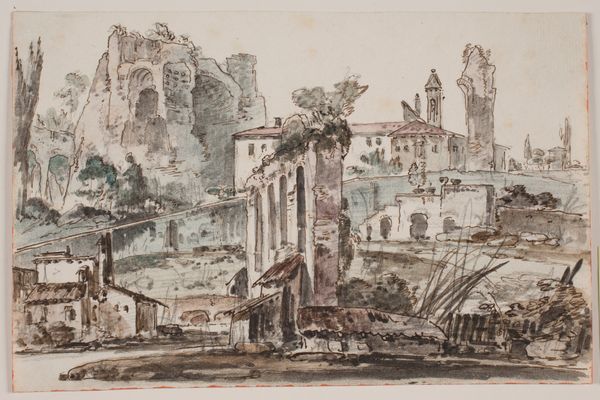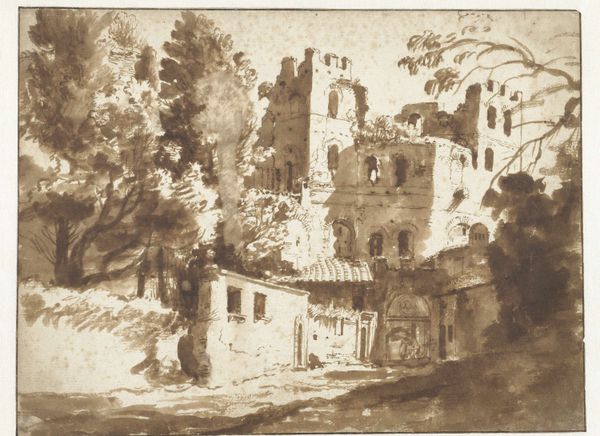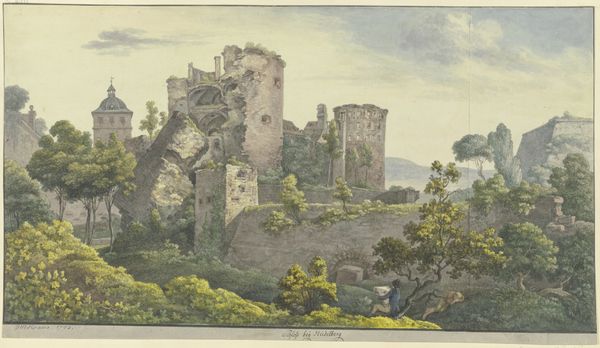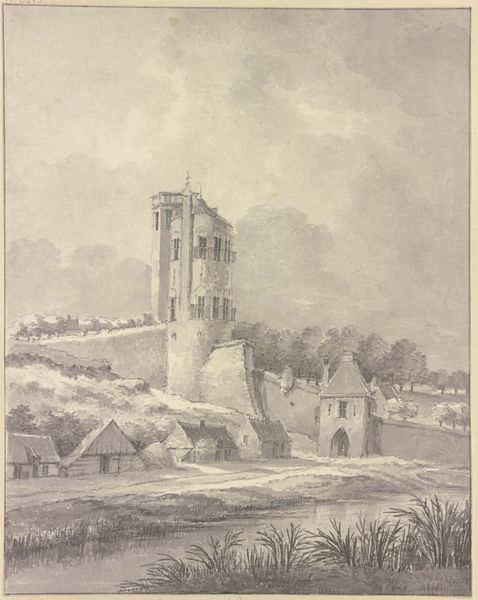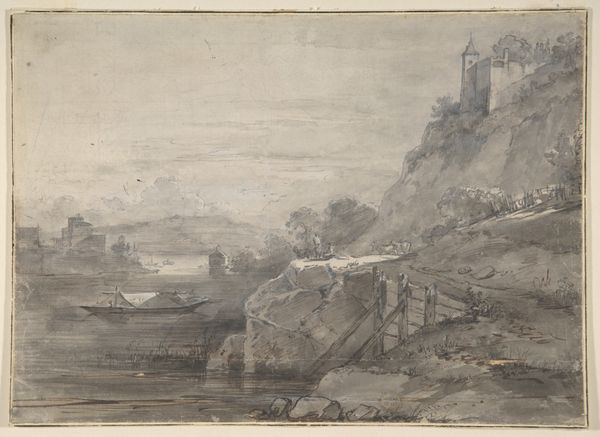
drawing, plein-air, watercolor
#
drawing
#
plein-air
#
landscape
#
charcoal drawing
#
watercolor
#
romanticism
#
cityscape
#
watercolor
Dimensions: overall: 44.4 x 50.2 cm (17 1/2 x 19 3/4 in.)
Copyright: National Gallery of Art: CC0 1.0
Editor: This is "Ruins of a Fortified Tower among Wooded Hills," a watercolor and charcoal drawing made en plein-air by Friedrich Salathé sometime between 1816 and 1821. There’s a quiet melancholy in the image that really strikes me. What do you see in this piece, considering its historical moment? Curator: That melancholic feeling is crucial. Consider the Romantic period – a time of immense social and political upheaval. The tower, a symbol of power and order, is in ruins, literally crumbling into the landscape. How might this imagery reflect anxieties about collapsing social structures? Editor: I hadn't thought of the tower itself as a symbol like that. The period's focus on nature makes me think the tower is simply returning to the landscape... Curator: Yes, but let’s complicate that a bit. Whose landscape is this? Often these "natural" depictions elide the labor and power dynamics inherent in land ownership. Who benefits from the tower's decay and its integration with nature? Does that romanticization obscure a deeper critique of power? Editor: That's a really important point about whose perspective is being centered. I see the potential for reading the tower's ruin as symbolic of crumbling feudal power structures, especially given the revolutions happening at the time. And maybe that "quiet melancholy" is connected to anxieties about those shifts? Curator: Precisely! Salathé isn't just passively observing. He's actively participating in a dialogue about power, history, and social transformation through his art. It asks us to consider who benefits and who is marginalized during times of great change. Editor: This has given me a lot to think about. Looking at it now, I see so many more layers of meaning. Curator: Indeed. Art like this isn’t just about aesthetics; it's a crucial lens for understanding the complexities of our past and present.

